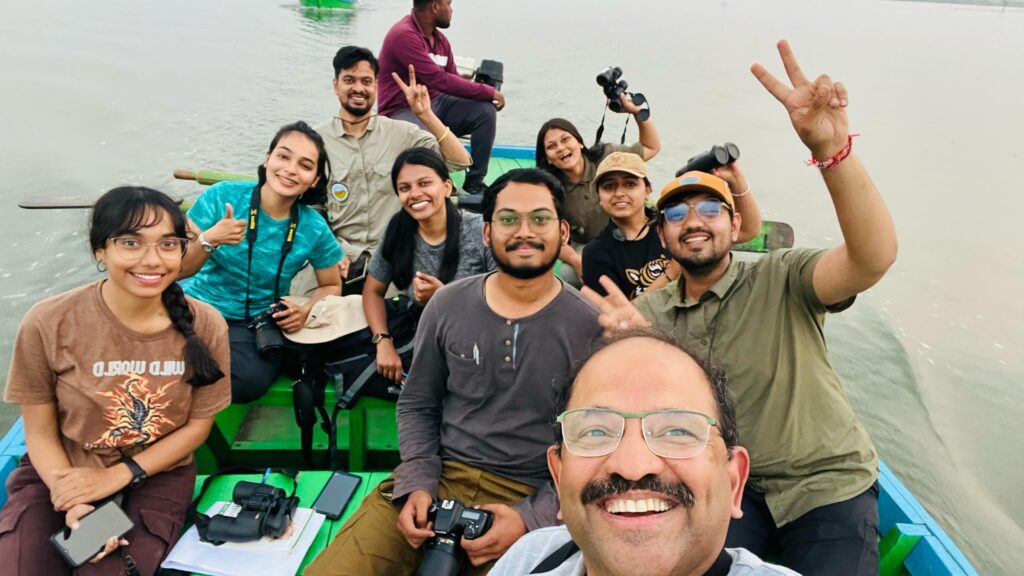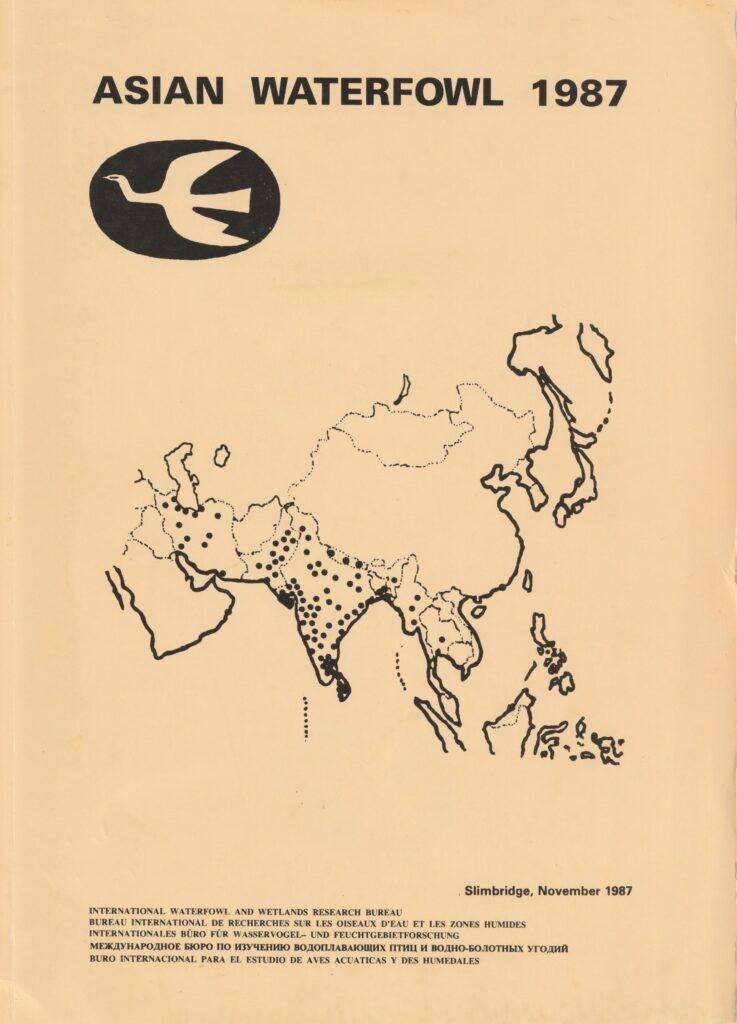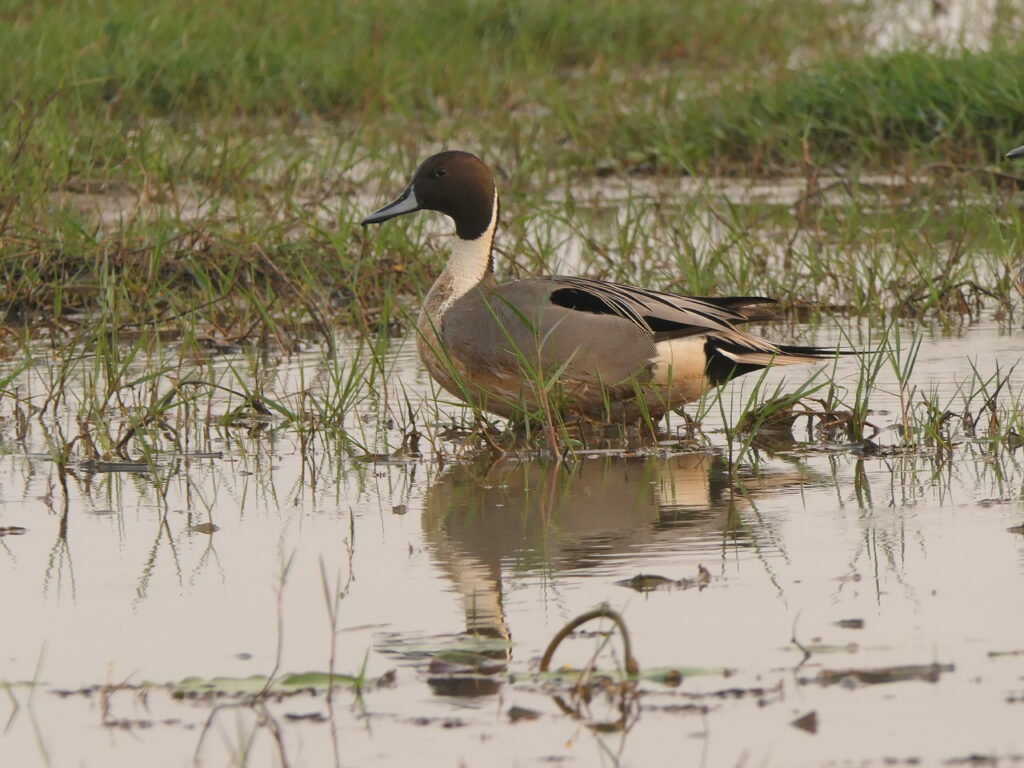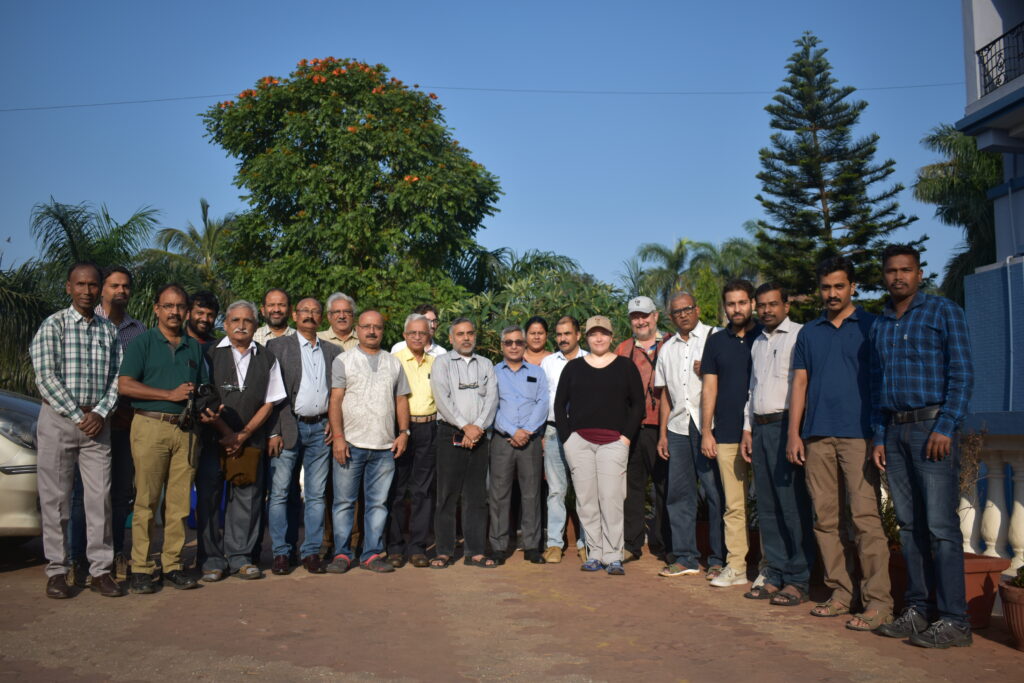
40 years of living in the Asian Waterbird Census world!
By Taej Mundkur
This World Migratory Bird Day is a timely moment to appreciate our feathered friends that are at this moment making their southern migrations from their more northern breeding grounds. By January and February, they will have arrived at their final destinations, and many waterbird species will congregate in the tens of thousands in all kinds of wetlands. For 60 years, the International Waterbird Census has recorded this annual “pulse”, keeping tabs on the changing numbers of waterbirds over time and what that tells us about the world we share. Beyond the science and policy, the IWC connects thousands of people counting with their local wetlands and wildlife. Whilst the statistics and analyses are vital, the inspiration and wonder are immeasurable. Dr. Taej Mundkur has been a counter, coordinator, pioneer and champion for the regional Asian Waterbird Census since it started in1987. Read his reflections on this unique effort below. Many more counters around the world have shared their stories on our website. And if you are inspired to help, contact your local coordinator or consider donating to the Waterbird Fund.
I had the privilege and great fortune of doing my PhD field research on the waterbirds of inland Saurashtra and the coast and islands of the Gulf of Kachchh in the western state of Gujarat of India under the able guidance of late Prof Ramesh M. Naik at the Saurashtra University, Rajkot.
It was sometime in 1986 that Prof Naik informed me about communication from the International Waterfowl and Wetlands Research Bureau (IWRB), UK, that very likely had been received through late Mr S. A. Hussain of the Bombay Natural History Society (BNHS) about plans to invite people interested in bird conservation to participate in a new initiative to collect information about waterbirds and wetlands through participation in a regional coordinated count effort called a mid-winter waterfowl census in January 1987. I was very excited with the prospect, and we made plans to cover several lakes and coastal wetlands by teaming up with Mr Pradeep Pandya and late Mr Narendrasinh Jhala at the WWF- India office in Rajkot and guided by the late Lavkumar Khacher.
We used an old jeep to visit these wetlands. I recall that in the dark cold northern winter mornings in January, the jeep’s windows were covered in condensation, and I regularly rubbed them with my sleeve to look out as we bumped along the dimly lit roads and tracks. In the first rays of light, there were often flocks of Demoiselle and Eurasian Cranes feeding in the fallow crop fields. In a couple of weeks, we traversed the region and covered nearly a hundred wetland sites. Many were new for me and in most or all of them we saw lots of waterbirds. In some wetlands, we were amazed to see tens of thousands of Demoiselle Cranes – the calls and sight of so many together is just unforgettable. We also met lots of local people who were curious and quite surprised that we were coming to see and count birds! They were reassured that we were not hunting them, as most local people there accepted them as a part of nature, even when some birds ate their crops.
We counted these birds and collected basic information about the wetlands. We diligently entered this information in the paper copies of Site and Count Forms we had received, checked them again and dispatched them by post to the BNHS. Several months later, we received a first report compiled by late Mr Joost van der Ven at the IWRB. And surprise surprise, our contributions to the counts had made it into this informative report and the state of Gujarat had contributed the most sites in the country. Of course, we were most encouraged by this feedback, and we set about making plans to cover these sites in January 1988 and to expand our efforts to even more sites across the Saurashtra peninsula and the Little Rann of Kachchh. This census was repeated every year until mid 1991 when I finished my PhD and left Rajkot. Each year we tried to cover some new sites too. In some of these years, the region suffered recurrent droughts, and many wetlands were dry. Crane and duck numbers varied a lot consequently and in years of low rainfall and food, the birds were forced further south to other states which may have had more water and food resources.

In each year we recorded some new and unusual birds for the area, including a Snow Goose in a reservoir near Muli, the first record for the country, with late Shivrajkumar Khachar. Our discoveries were not restricted to just waterbirds. One year, we recorded a flock of at least eight female and juvenile Amur Falcons near Porbandar, which was a great surprise, as this species was known to be only a passage migrant in India enroute to its non-breeding grounds in southern Africa.
All in all, these annual counts provided much new and valuable baseline information about the distribution and numbers of waterbirds and their dependence on the inland natural and human made wetlands, in urban and rural landscapes, agricultural lands and coastal wetlands. We marvelled at how the information we were collecting clearly showed fluctuations in bird numbers and diversity that appeared to be directly related to the previous monsoon for rain-fed agriculture and amount of water in the seasonal wetlands by January that was available for the waterbirds.
Managing the planning of the surveys, filling in and submitting the forms was a task handed to me by Prof Naik and he made sure to check it all diligently each year. Fortunately, I was able to work with Rishad Pravez, and other colleagues and friends who participated in the annual counts and whose handwriting was much better than my scrawl, so we submitted legible forms!
As luck would have it, I moved to Malaysia to work at the Asian Wetland Bureau (AWB) in mid-1991 and one of my first tasks was to coordinate the Asian Waterbird Census, at the regional level. It was a steep learning curve to go from helping to coordinate our counting efforts in Saurashtra to now doing it for all the countries across Asia.
And as the saying goes, the rest is history.

I thoroughly enjoyed working with Christian Perennou and others at the IWRB in jointly coordinating the census for the first years, until I took this on and led it for AWB. At AWB, I had the pleasure of coordinating the AWC regionally with Alvin Lopez (who now works with the Asian Development Bank), David Li (who worked with National Parks Singapore and continues to contribute to the AWC annually), Doug Watkins and several others who kept the programme going.
Coordinating the annual census gave me a chance to work with an ever-increasing number of wonderful people in every country over the years and decades. This was a great opportunity to learn about the national and local issues and challenges and to work with them to find ways and to encourage them and their local volunteer networks to organise the counts and submit the information. And how best to turn information into reports to support local, national and international conservation efforts for waterbirds and wetlands.
The AWC has been recognised as a major tool to encourage monitoring of waterbirds and wetlands in the Asia-Pacific region and bring people together, raise awareness of the beauty and importance of waterbirds and wetlands, as well as the many threats and challenges they face. The AWC has been a critical tool to support the development and implementation of the Asia-Pacific Migratory Waterbird Conservation Strategy that brought together governments, conventions, NGOs, research institutions and local communities between 1996-2006. This has supported the development and implementation of the East Asian – Australasian Flyway Partnership and its Flyway Site Network, the ASEAN Flyway Network and the Central Asian Flyway Initiative launched in 2024.
AWB became Wetlands International from 1996, when AWB, IWRB and Wetlands for the Americas joined hands as one new global organisation. This provided us an opportunity to strengthen the IWC as a global monitoring programme. Conservation agencies in many countries have used IWC information to prioritise national waterbird and wetland conservation actions. They have used this information to enrich their national reports and plans to the Ramsar Convention on Wetlands, Convention on Migratory Species, Convention on Biological Diversity and others.
The information has also provided valuable data to many researchers in colleges, universities and research institutes and NGOs to understand and predict the fortunes of waterbirds and wetlands and the need for action. The data has been valuable to review and update the conservation status of waterbird species for the IUCN Red List of Threatened Species that is organised by BirdLife International.
In moving to the Netherlands in 2009, I have continued to coordinate the AWC working with Tom Langendoen and Ward Hagemeijer. In addition, I have helped to coordinate the IWC globally, working closely with Daniel Blanco who has led this in the Neotropics and Szabolcs Nagy who has led this in the African-Eurasian region. As well as with Lisa Sorenson of Birds Caribbean to get the Caribbean Waterbird Census going (wonderful to see how this has grown so well) and encouraging Arne Lesterhuis and others in organising the Central American Waterbird Census (a quick growing programme too).

The continuation of the annual census is really a testament to the untiring work of tens of thousands of volunteers, young and old who have conducted the counts, mainly at their own cost. Equally, it is a tribute to the many volunteer national and local coordinators and partner organisations, including BirdLife International, who have organised and conducted the counts in their regions.
Fortunately, over this time, the march of technology has enabled us to move forward and work more efficiently. Submitting information has become much easier and quicker as we have progressed from cyclostyled paper forms in the first years to photocopied forms and more recently to digital tools, websites and smart phones to record and share our census information and to turn them into meaningful reports.
Over these many years, Wetlands International has been fortunate to be able to coordinate this work at the regional level in Asia with financial support of governments, notably the Ministry of the Environment of Japan. We have also received initial support from Australia and other governments to support the core coordination work, publications, training courses and other activities linked to the AWC. We are grateful to them all.
So, the AWC and IWC have been closely intertwined with my life and work for the last 40 years – both as a volunteer enjoying counting waterbirds and as a professional staff member of Asian Wetland Bureau and Wetlands International.
It is wonderful that the IWC and AWC continue to inspire people to go out to count waterbirds and assess condition and threats to wetlands and waterbirds each year, in the freezing cold, rain or the scorching heat. Hopefully this enthusiasm will continue to grow and provide a continued basis for stronger citizen-science based monitoring and government and business supported conservation action into the next century.

